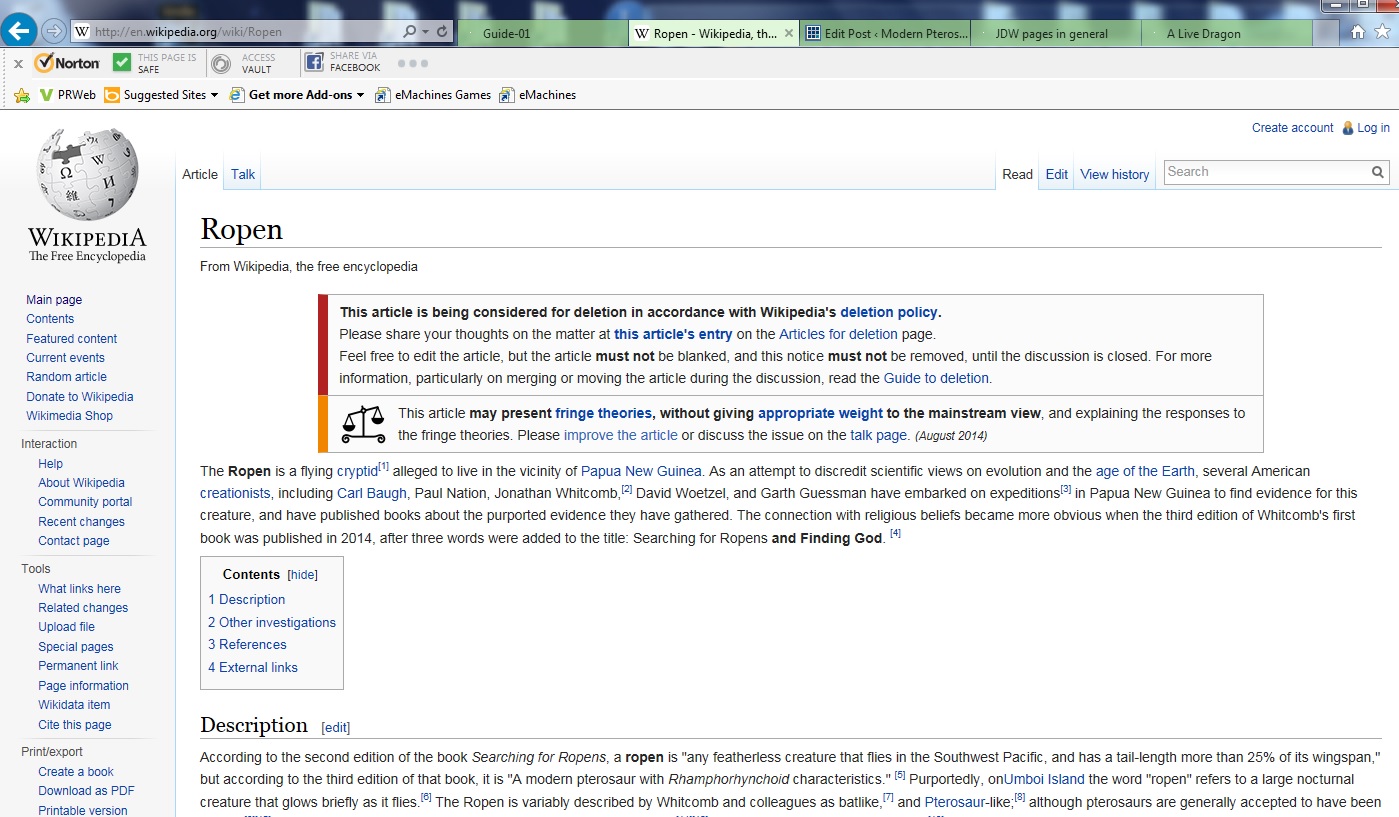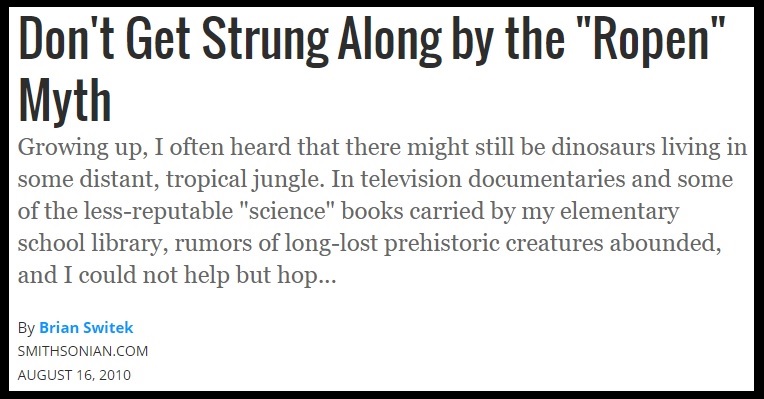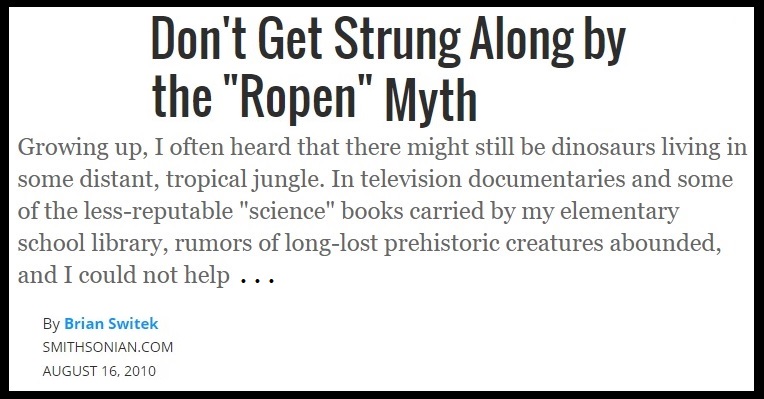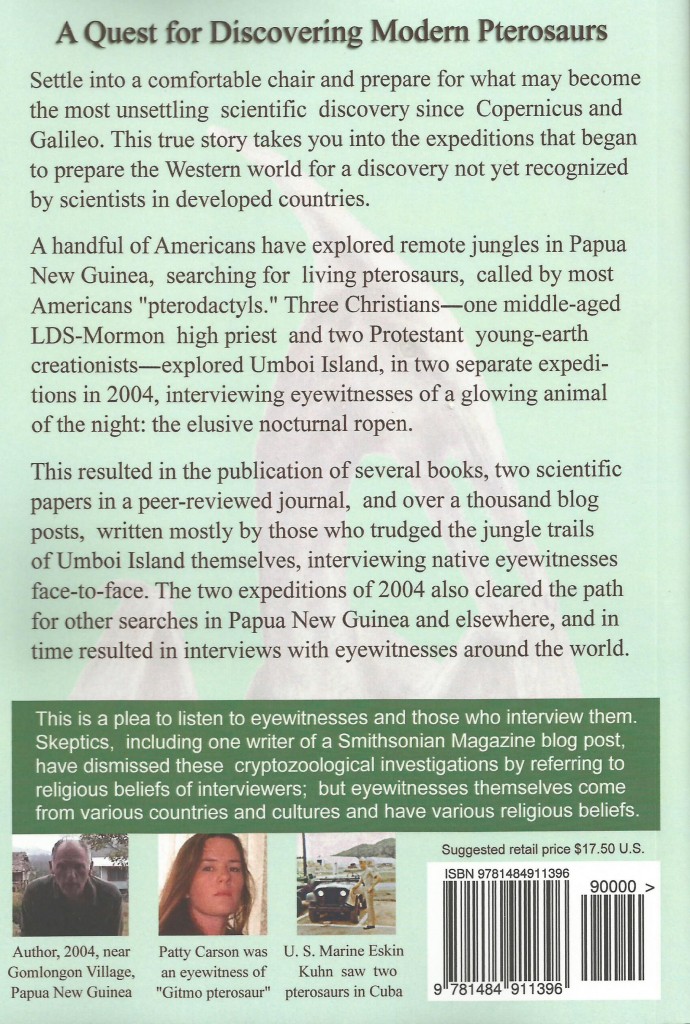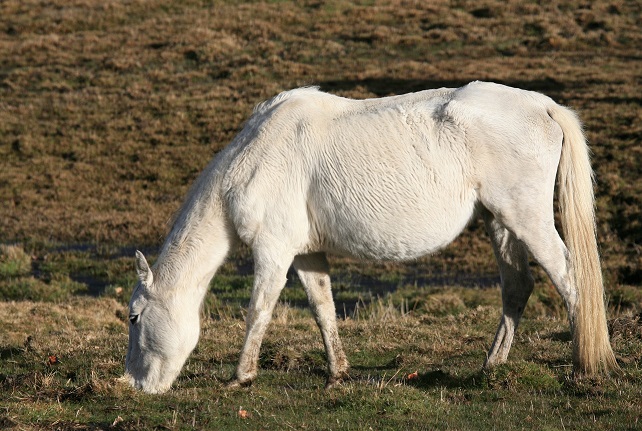I have been practically (but not officially) banned from contributing anything anywhere on Wikipedia. Why? Because I told the truth and was therefore accused of the opposite. This is complicated, so let’s take one step at a time and see if I did contribute anything to lying. I submit that whatever lie may have been involved, it was not mine.
Ropen Article on Wikipedia
For several years, Wikipedia has given the world many paragraphs in its article “ropen.” That changed this month (August of 2014). Here is part of the explanation:
This article is being considered for deletion in accordance with Wikipedia’s deletion policy. . . .
This article may present fringe theories, without giving appropriate weight to the mainstream view . . .
There lies a weakness in Wikipedia, although a solution seems hard to come by. When proponents of the “mainstream view” on a subject seem reluctant to state their orthodox opinions, in sufficient content-size, a fringe theory can appear to be unbalanced in an article, favoring too much an unpopular point of view. Supporters of the old universal-pterosaur-extinction dogma are numerous, but they have, on the whole, been reluctant to contribute standard-model views on the Wikipedia “ropen” article. That was the original problem my associates and I faced earlier this week.
An Attempted Solution was Derailed
I tried to solve the problem by quoting the words of the paleontologist Dr. David Martill. What could be more simple? He gave his opinion about the improbability of modern pterosaurs in an podcast interview, and the words were transcribed on the page “Dr. Dave Martill & Pterosaurs.” Think about it: What more natural solution to the Wikipedia problem than adding a non-fringe opinion related to the ropen?
That is when I was rear-ended by a Wikipedia editor, within minutes of my uploading the contribution. That self-appointed editor deleted my entire submission, instantaneously. I had no knowledge about the proper behind-the-scenes discussion procedures on Wikipedia, and I had already spent a good part of my afternoon in preparing my contribution and figuring out and applying the references formatting. Evening was approaching, and I felt no desire to fight the thing out. Early the next morning, I saw how fortunate I was not to have continued trying to submit anything on Wikipedia.
Quoting Dr. David Martill
I tried to quote the words of a paleontologist with whom I disagreed. Why? To save the Wikipedia “ropen” article from deletion. Dr. Martill seems to be one of the world’s most respected living experts on pterosaurs (let’s be clear here: living pterosaur-expert, NOT living-pterosaur expert; where you put the hyphen is critical). Here is what I tried to contribute to Wikipedia:
Dr. David Martill is a world renowned authority on Pterosaurs. In a podcast interview, he said, concerning the possibility of pterosaurs surviving into modern times, “Let’s assume that just a few did get through . . . right up to the present day. Where would we go to look for them? Well, I think we’d have to go for somewhere that had been largely unexplored, that could exist, without mankind’s having come across them. Because flying animals, when they’re disturbed, anything that is able to fly has an ability to escape using flight. It takes to the air and in the air, you are visible. . . . If pterosaurs were still around, hey if you disturbed them, they would take flight and you would see them flying away. If they were going to be around, they’re going to be somewhere where nobody’s . . . been, nobody’s taken a camera, nobody’s every managed to capture an image. There aren’t terribly many places left on the planet where that’s the case.”
I saw an apparent error in the transcription (“When a bird takes fright“—but when referring to pterosaurs, the transcription later says “take flight”) and left out that sentence. I believe I left out one or two other sentences because the ideas were repetitive. I also left out one word, “every,” because it seems to be an error in English, with the original transcription being “somewhere where nobody’s every been.”
Please be aware, I was not intending to distort anything that Dr. Martill was communicating. I left out any reference to Papua New Guinea, in my attempted contribution to Wikipedia, because it could have made the paleontologist look bad (he did mention Papua New Guinea). I simply wanted to contribute a paragraph, at least, that would give balance to the ropen article.
Lie or Honesty?
Here is the self-appointed editor’s comment on why he deleted my contribution (quoting of Dr. Martill):
Consider this a final warning – if you once more add grossly misleading material to the Ropen article, as you have done by selectively quoting a source in such a way as to imply the opposite conclusion to that which the source supports, I will report the matter at WP:ANI, and ask that you be topic-banned or blocked. Wikipedia does not lie to its readers. AndyTheGrump (talk) 22:34, 19 August 2014 (UTC)
If I had continued trying to contribute that quotation, I could have been “banned,” apparently. I dispute the above, but I prefer to reply here, to the statement by “AndyTheGrump,” rather than in the Wikipedia background discussions; few persons read those almost invisible comments. For those who would like to compare my selective quoting with the original, see Interview of Dr. Martill. I see no substantial difference in meaning.
I do not accuse AndyTheGrump of telling a lie in his comment of 19-Aug-2014-22:34; I offer another explanation. A severe bias against somebody who holds to a fringe opinion can cause the biased person to carelessly dismiss the fringe-person’s quoting something. If AndyTheGrump was honest in his above statement, then his bias appears to me to be the most likely explanation for his words.
Who among us has never been guilty of a careless mistake? I suspect this Wikipedia editor was careless, noticing some weakness in the words I quoted and assuming that the original source lacked that weakness. Dr. Martill’s reasoning itself is a problem, in my opinion, yet that is too deep for coverage here: It deserves a post for itself. The point now is this: Oh, how we need writers and editors who think more clearly!
Sometimes a writer quotes the words of someone with a contrary opinion, for one reason or another. That does not mean that the quoting must be out of context or somehow deceptively. Even if the writer has a fringe opinion, quoting an opponent need not be improper. It can take a careful examination by an objective editor to come to any certain conclusion, at best. A careless dismissal can do much more harm than good.
Complete Quotations and Copyright Issues
How much can you quote on Wikipedia before a copyright issue comes up? I don’t know, but I did not want to get too close to an infringement. That was part of the reason that I quoted only some of Dr. Martill’s words on the difficulty of pterosaurs surviving into the modern day. Perhaps I should have simply written a brief statement on Wikipedia and linked the idea to the source. All that is irrelevant now, for I’ve given up on Wikipedia.
###
Ropen — page published by Whitcomb
Long-tailed feather-less ropen-like flying creatures have been reported around the world, including states in the U.S.A.
.
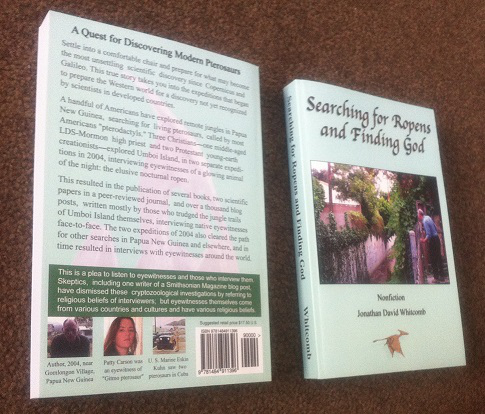
Searching for Ropens and Finding God — one of several nonfiction books by Whitcomb
From page 26 of the book:
The sighting occurred at about noon, west of Finschhafen, after the two soldiers left their vehicle to hike inland. They stopped at the edge of a clearing to watch a colony of large ants on a log, when a wild pig startled something huge, only a hundred feet away. The creature, which Hodgkinson first assumed was a bird, flew up from the edge of the clearing and, as it circled, fifty to one hundred feet above the men, presented a “perfect side view” of itself—obviously no bird.
.



